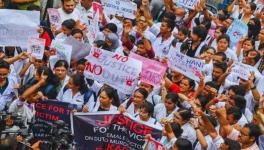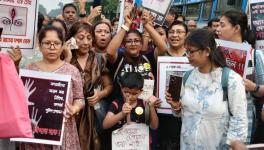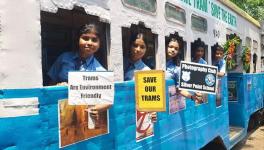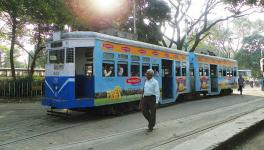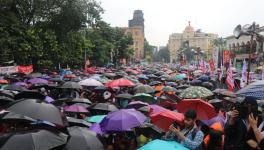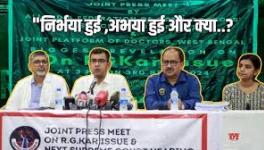West Bengal: Anaemic Mothers, Food and Nutrition Shortage Highlighted by NFHS 5
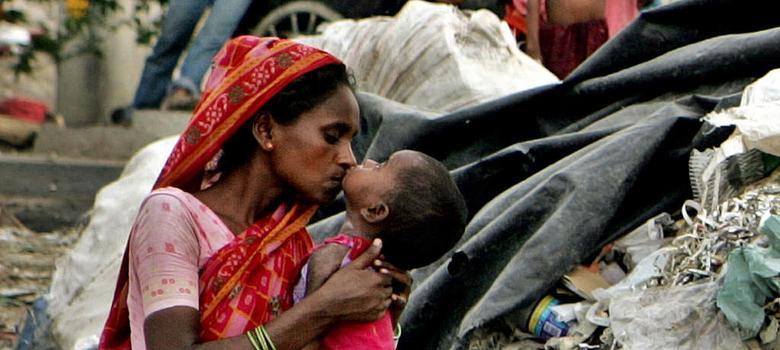
Representational Image. Image Courtesy: Reuters
The National Family Health Survey 5 has highlighted increasing poverty levels and severe food and nutrition shortage in West Bengal. The state ranks higher than the national average in terms of anaemic mothers and institutionalised child birth in rural areas is yet to reach the desired hundred percent level across the state, according to the survey.
In terms of maternity care, the state lags behind with only 64.4% women receiving folic acid during pregnancies in urban areas and 61.8% in rural areas.
These statistics furnished by the Survey have exposed the glaring anomalies in the state government’s claims of the state being among the top in the country as far as health and nutrition are concerned. Further, the survey also revealed that anaemia is rising among girl children aged as young as six months to five years.
Jebrunnisa Bibi from Ushti area of South 24 Parganas district was 16 years old when she was married to Md Soukat, a rickshaw puller last year. Both of them now have relocated to a bustee near Panchanna gram, as earning opportunities for her husband was very meagre in the village, Jebrunnisa told NewsClick.
However, in Kolkata as well, even before the pandemic-induced lockdown began, their protein intake has been extremely low with the couple surviving on one meal of rice a day. Despite their meagre earning, they have to pay a rent of Rs 30 for the borrowed rickshaw.
“Rice with curry of some vegetable leaves or salt is the only meal we can afford. Eggs and even pulses are a delicacy for us now,” Jebrunnisa said. In the meantime, she also gave birth to a baby who is suffering from stunted growth. Both mother and daughter are also anaemic. However, she was one of the luckier ones as she was able to have an institutionalised delivery at a government facility in Bangur, where she was provided with two square meals “with fish”, which Jebrunnisa recalled fondly.
Also read: Mother and Newborn Care System Crumbled During COVID-19 Lockdown
Even though Integrated Child Development Services (ICDS) workers have been proactive in the area, many still do not have access to the benefits of government schemes, Jebrunnisa and her husband said.
The crowds in the people’s canteens, community kitchens run by the Communist Party of India (Marxist), also point towards the fact that cooked food has become increasingly inaccessible for people below the poverty line in the state. These canteens, where cooked meals are available for Rs 20 draw huge crowds regularly wherever they have been set up.
The unplanned lockdown and the consequent crisis has added to the health crisis that has been brewing in the state and has been highlighted by the NFHS 5.
While prevalence of anaemia among women in the state points towards the inefficacy of the state’s health schemes, it is also a result of the failure to arrest early marriage despite the much touted Kanyashree scheme of the state government, which has been tomtommed as a success by Chief Minister Mamata Banerjee.
Also read: West Bengal’s Public Healthcare Struggles with Lack of Staff
Nearly 81% of the women married between 15-19 years suffer from untimely pregnancies in the state, with the percentage being much higher at 90% in case of only rural areas.
Compared to the NFHS 4 report, the figures of the latest report are no better. The condition anaemic mothers is actually much worse in several age groups. In urban areas, it has reached a whopping 64% while in rural areas nearly 74% of all mothers are anaemic. Similarly, the percentage of anaemic children aged six months to five years has increased to 69% from 54% in the last survey.
Overall, in each of the groups, anaemia has risen among females in the state. In terms neo-natal mortality rate, too, the state witnessed a rise from 15.5 to 16.1 in the latest survey. However, the state showed some progress in the under five mortality rate, with a five point decrease.
While the state government has reportedly added to its health infrastructure, the abysmal health report is an indicator of the critical socio-economic condition in the state.
Get the latest reports & analysis with people's perspective on Protests, movements & deep analytical videos, discussions of the current affairs in your Telegram app. Subscribe to NewsClick's Telegram channel & get Real-Time updates on stories, as they get published on our website.














